Troisgros is a legendary French restaurant that began its life in the sleepy town of Roanne. The first iteration was with Jean-Baptisite Troisgros and his wife, who opened a restaurant in 1930. This was renamed in 1957 to “Les Freres Troisgros”. Jean-Baptiste’s sons Jean and Pierre Troisgros, and later Pierre’s son Michel, built up the reputation of the restaurant, gaining a Michelin star in 1955, a second in 1965 and the ultimate third star in 1968. Pierre Troisgros was one of the founders of “nouvelle cuisine”, along with other now luminary chefs including Michel Guerard, Alain Chapel and Roger Verge. Michel Troisgros was voted the most influential chef in the world by a panel of over five hundred international chefs in 2018. His son Cesar now heads the kitchen, though Michel was still very much in evidence.
In 2017 The restaurant moved into the country, just 8km to the even sleepier commune of Ouches, a place sufficiently nondescript that its Wikipedia entry currently has no text whatsoever. The restaurant is now set on its own in a 17-hectare space with fifteen bedrooms on the property. The Troisgros dining room is a U shaped corridor lined with floor to ceiling glass, connecting two traditional farmhouses. This has the effect that from the tables you have the illusion that you are sitting directly in the garden, emphasising the connection to the countryside. The property has fifteen bedrooms if you wish to stay the night after dinner.
There were tasting menus at €160 and €280 as well as a full a la carte selection. The 800 reference wine list ranged from €40 to €19,000 in price, with labels such as Domaine Jacques Puffeney Les Berangeres Arbois 2012 at €75 for a bottle that you can find in the high street for €30, Dog Point Sauvignon Blanc 2013 at a hefty €80 compared to its retail price of €16, and Domaine des Comtes Lafon Meursault Clos de la Barre 2011 at a very fair €180 for a wine that will set you back €172 in a shop. For those with the means, there were grander offerings such as Coche-Dury Meursault Rougeots 2010 at €600 compared to its retail price of €962, and Etienne Guigal La Turque 1998 at €750 for a wine whose current market value is €562. There were a few genuine bargains tucked away, such as Coche-Dury Meursault 2015 at €200 compared to its current market value of €631. Further up the list there are other bargains for those with thick wallets, like Coche-Dury Meursault Caillerets 2005 at €1,000 for a bottle, which is a lot of money in absolute terms, but is a relative steal given that it currently has a market value of €2,699.
The meal began with a few canapés. A little tartlet of peas and onion had very delicate pastry and beautifully sweet peas. Also impressive was the precise balance in a canapé of goat cheese, capers and vinegar and pepper crisp, with the texture contrast working really well and the sharpness of the vinegar and the capers as ideal foil for the cheese. There was then a panna fritta of fromage blanc cheese and hazelnuts, and a beetroot and blackberry jelly with delicate Sarawak pepper paper. These were classy nibbles (19/20). Although much of the bread here is made in the kitchen, sourdough was bought in from a bakery in the Rhône valley, and was superb.
The first formal dish of the meal was white asparagus strips with poached squid, resting in a rhubarb and strawberry sauce with a touch of ginger and a carefully controlled touch of Sichuan pepper. This was a gorgeous dish, the earthiness of the asparagus contrasting with the very tender squid, beautifully balanced by the acidity of the rhubarb in the sauce (20/20). The next dish was a little nest of fried carrot with wild garlic, herbs and capers with a little bottarga. This was remarkable, the delicacy of the crisp shreds of carrot really impressive, the potentially dominant bottarga carefully controlled, the textures superb. It is one thing for a chef to take a luxury ingredient like a big langoustine or a fillet from a huge turbot and make a good dish, but to elevate the humble carrot to these heights of flavour takes real talent (20/20).
A mousseron tart contained lobster flesh, and was a really interesting contrast of flavours between the woodland mushrooms and the shellfish, the latter being superbly delicate with a hint of natural sweetness, the pastry beautiful (20/20). Red mullet came with tiny cubes (brunoise) of celery and a sauce of shallots, white wine and lemon. This was a good example of the Troisgros kitchen’s fixation on precise acidity, the level of sharpness in the lemon exactly right to go with the high quality red mullet, and the distinct flavour of the celery an excellent balance to the fish (20/20).
Next was Brittany lobster with poached fennel and herbs with a curry sauce. The lobster itself was glorious, the meat tender and naturally slightly sweet, the fennel having great flavour but the star was the curry sauce. Other than the pioneering Olivier Roellinger, few French kitchens take on the world of spices, and when they do they often restrict themselves to a gentle, generic hint of warmth from a mild masala mix. Here there was a controlled but distinct kick of heat, the spices distinct and vibrant, but judged just right to enhance rather than dominate the delicate flavour of the lobster. Again this was a stunning display of precision flavour balance that most kitchens can only dream of (20/20).
The final course was sweetbread that had been poached and then pan-fried, accompanied by aubergine that had been poached in dashi, along with marinated onions, spring onions, a little orange peel and a sauce of sesame, soy, mirin, garlic, sake and miso. This was another triumph, the Asian flavours in the sauce a lovely foil for the mild flavour of the top quality sweetbread, the aubergine offsetting the richness of the sweetbread (20/20).
An impressive selection of cheese was in top-notch condition, as one might hope in a restaurant of this calibre, including some lovely Camembert, Munster and aged Comte. A nod to Japan came with a pre-dessert of chocolate with salted cherry blossom with Japanese beans and a sake mousse. Intriguingly the sake was actually made in France rather than Japan, from a pioneering producer near St Etienne. This was very enjoyable and refreshing, though was not quite up to the level of the stunning sequence of savoury dishes that we had just eaten (17/20). This was followed by a dessert whose appearance was inspired by a painting by artist Claude Viallat. This had poached rhubarb with elderflower foam, strawberry marmalade, a crunchy “pate a cigarette” pastry with citrus powder. The rhubarb was very nice but if anything it might have been a little sharper, and again this was a very enjoyable dessert but not quite at the level of the savoury dishes (perhaps 18/20).
Service was absolutely superb, our waitress charming and the sommelier impressive. The bill came to €568 (£506) per person, but this was with more high class wine than a sensible person would drink. If you opted for the short tasting menu and shared a modest bottle of wine then a typical cost per person might be around £200. This was a fabulous meal from a kitchen operating at the top of its game. The difference in quality between the food here and that of the three star promotions in France in recent years is considerable. Troisgros is a world-class restaurant.
Further reviews: 17th Jun 2016 | 01st Jun 2009 | 01st Jun 1996
































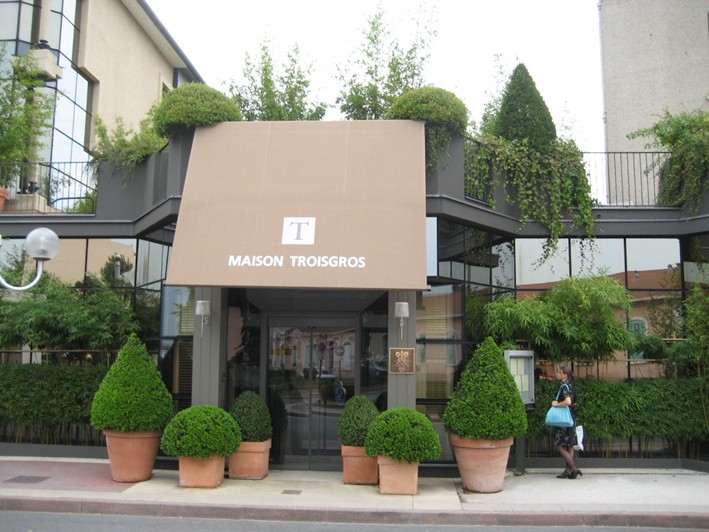
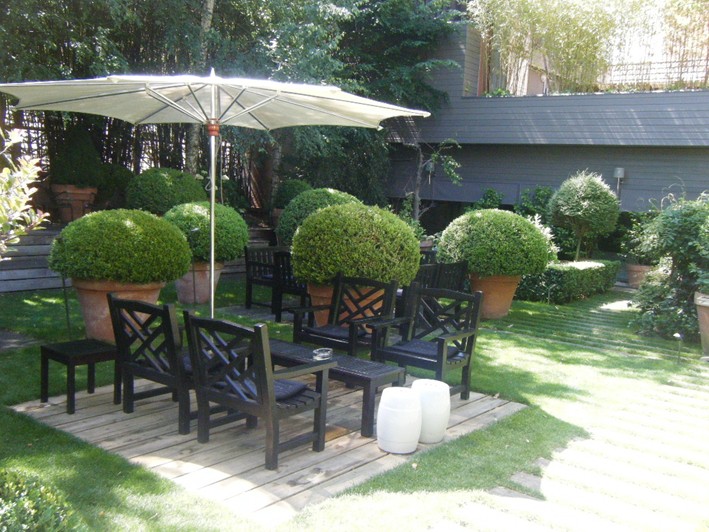
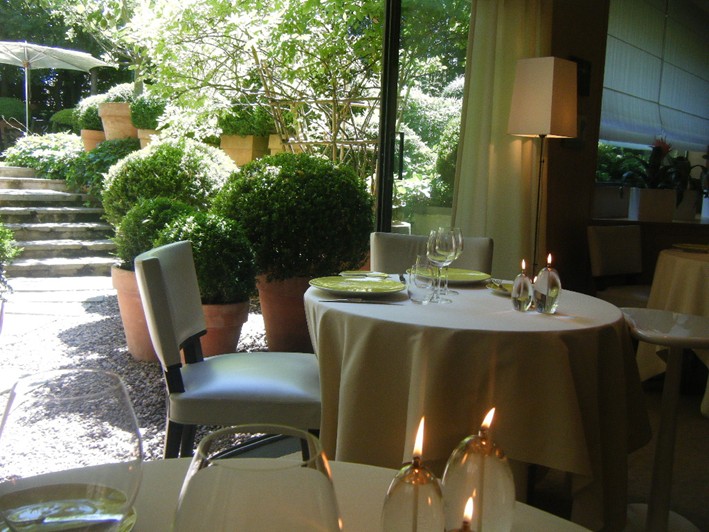
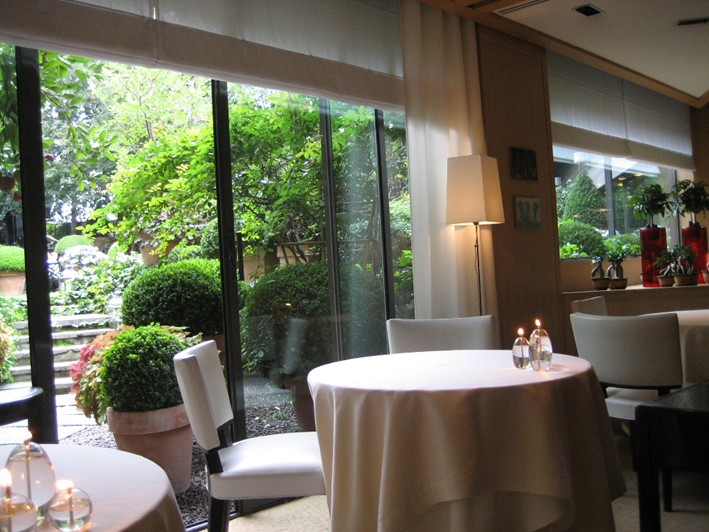
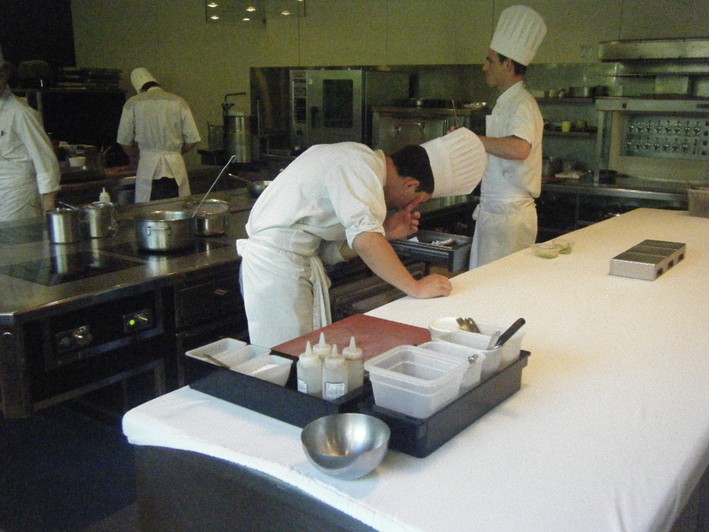
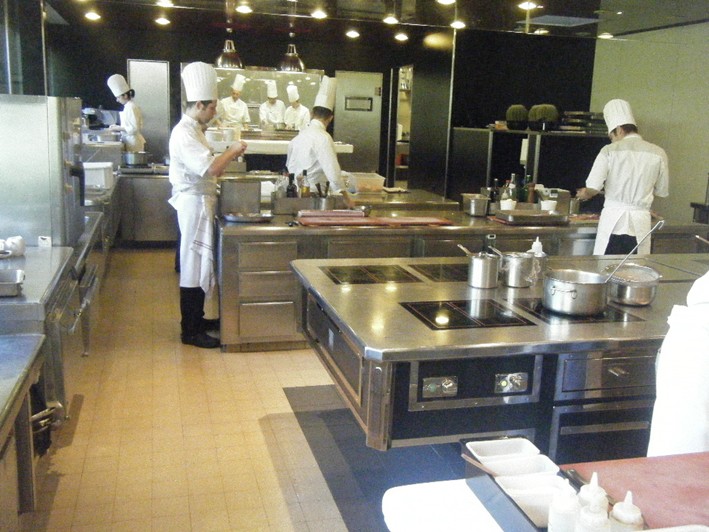
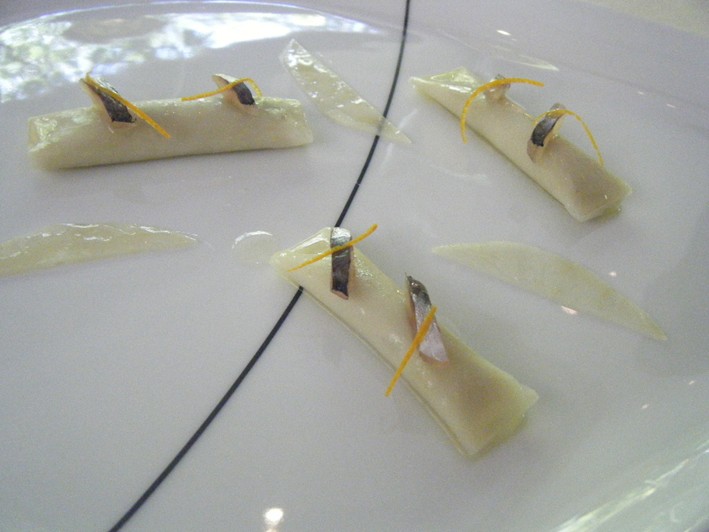
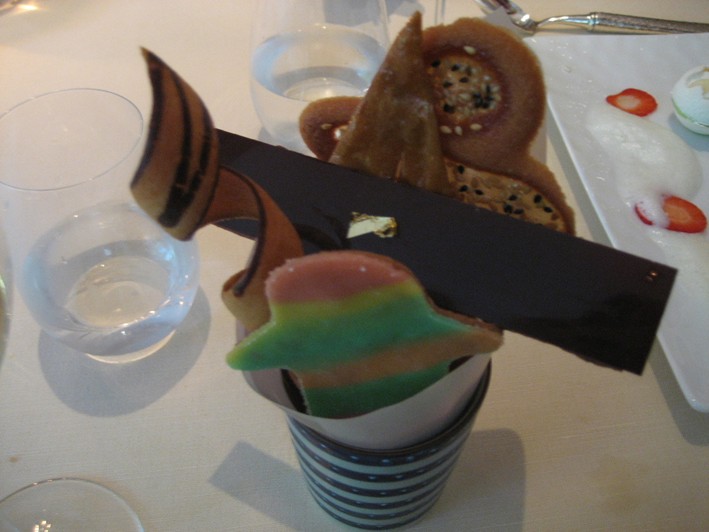
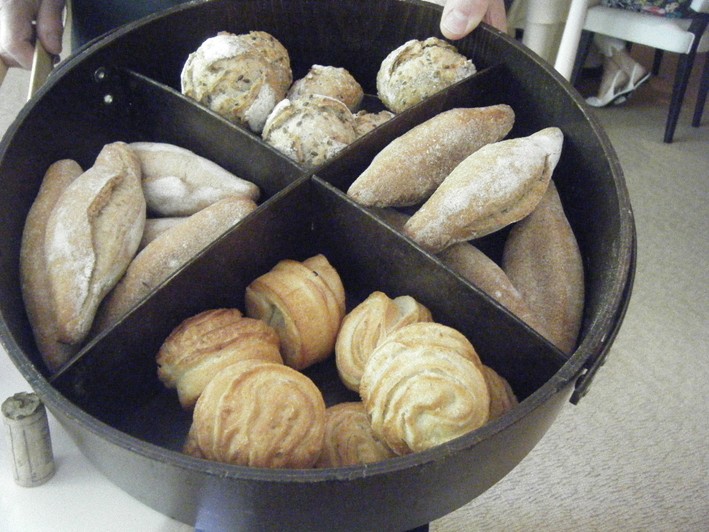
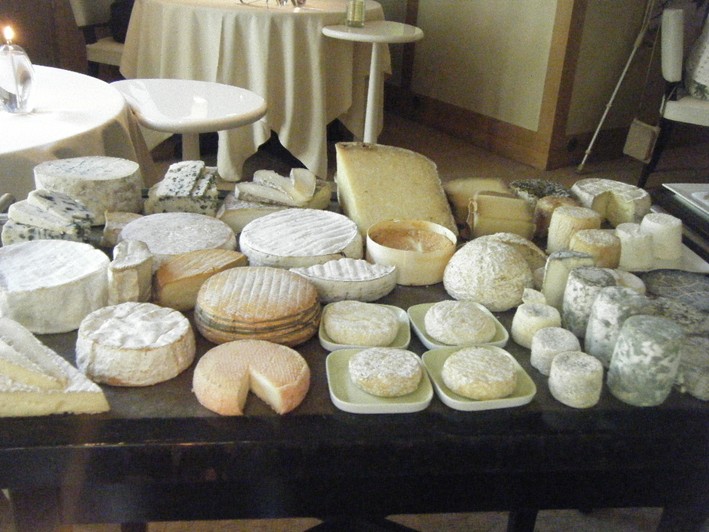

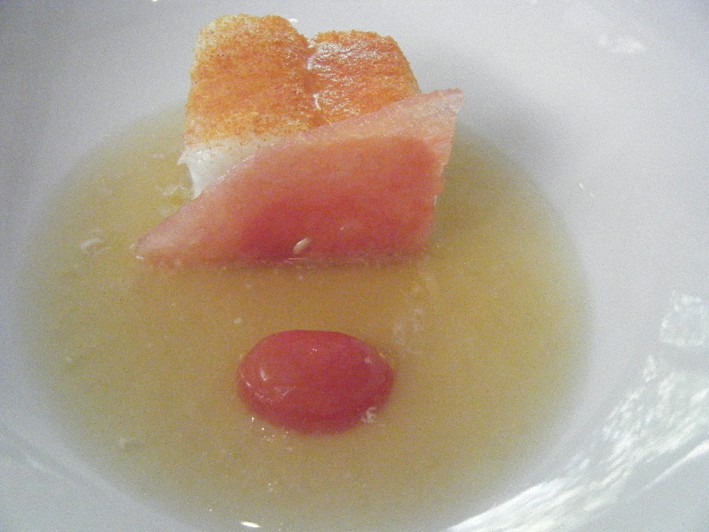



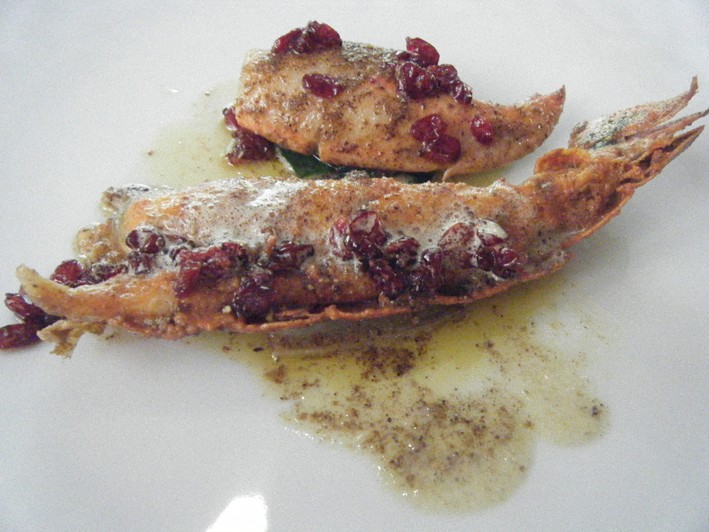


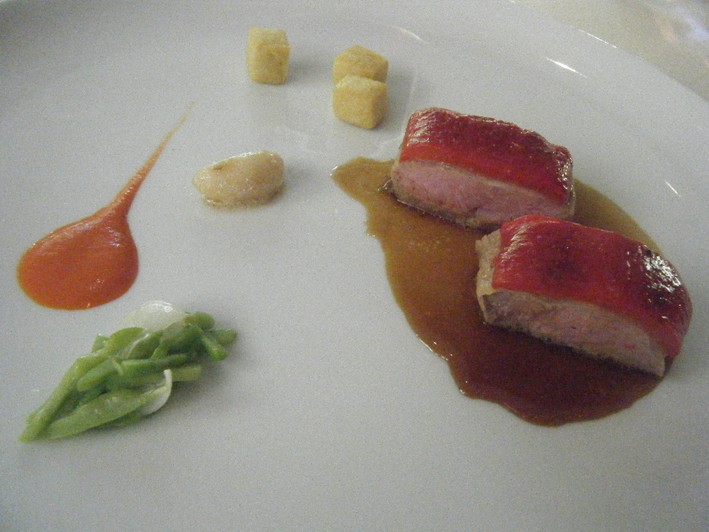
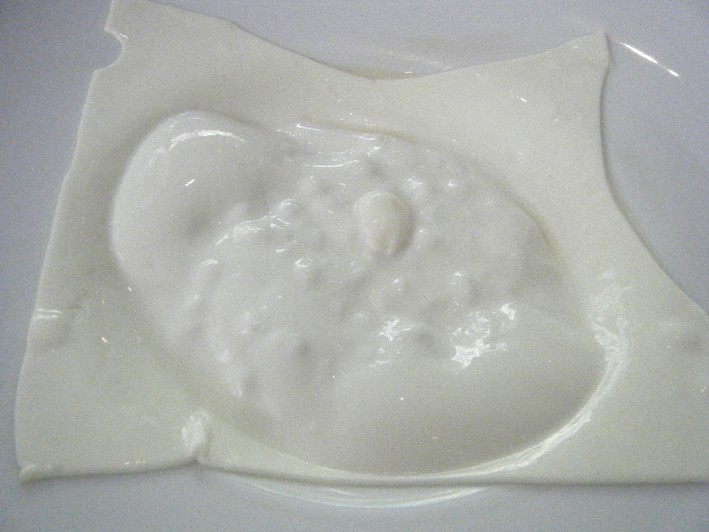
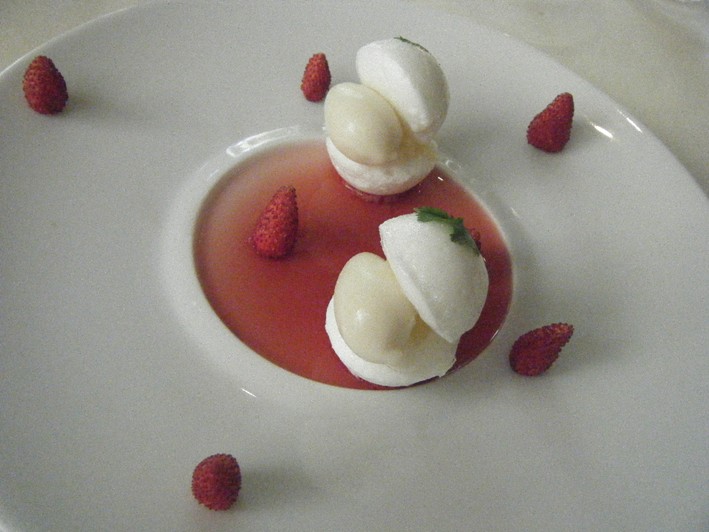
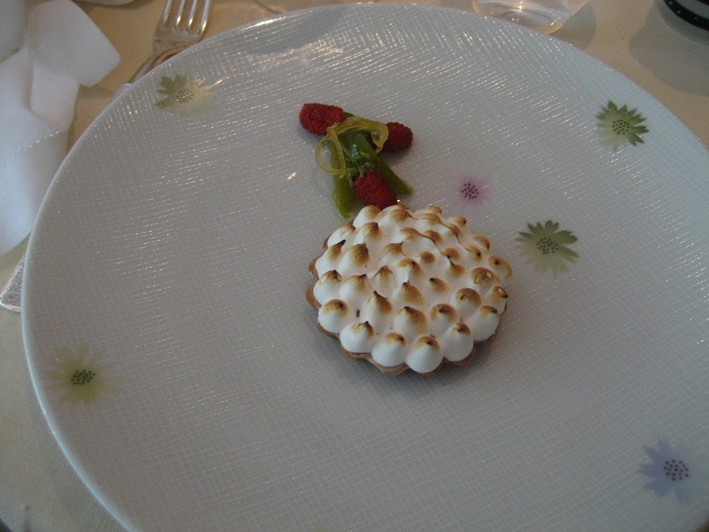

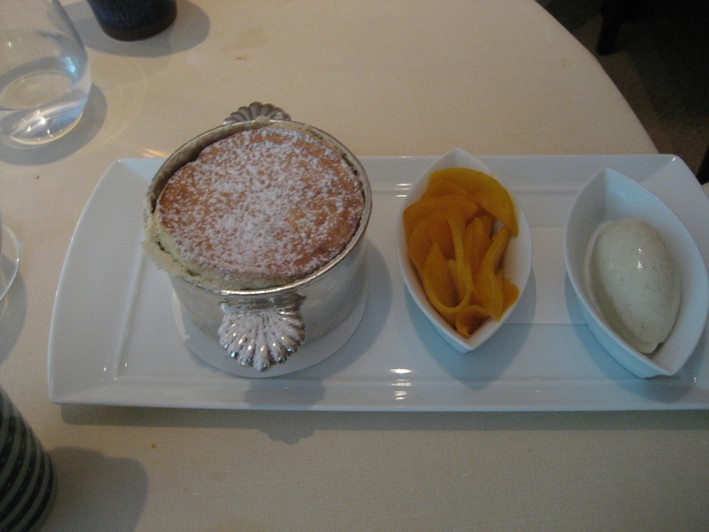

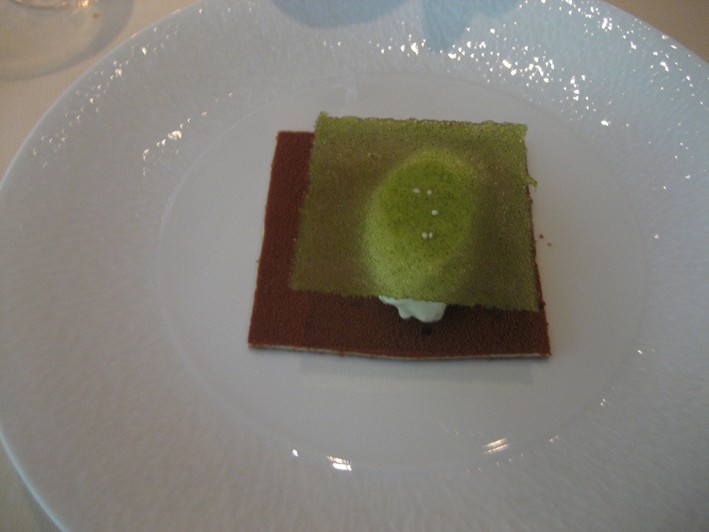
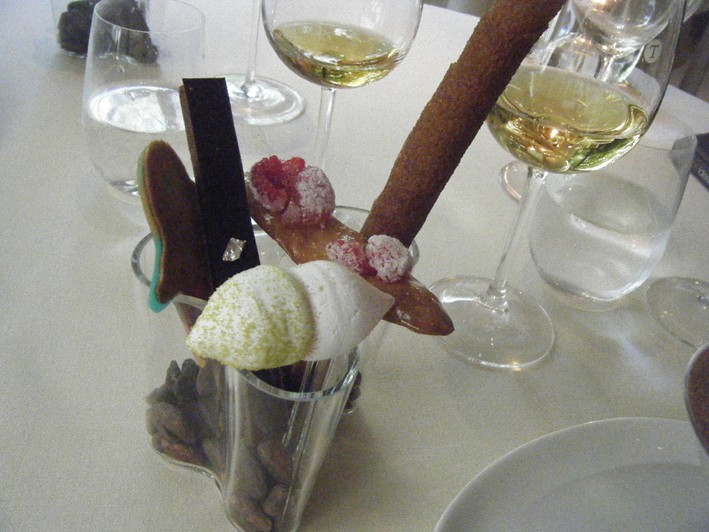

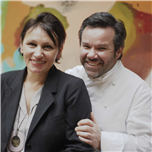
Marc
So excited by your review we have booked a dinner at Troisgros and staying the night.
Upnworld
Superb review Mr.Hayler ! So many 20/20 scores ! A testament to their guts and commitment that they play this top-notch game even when so far away from the main geographic centres, a little like Michel Bras. What I especially admire about these places is that they don't lose the focus on flavour no matter what the current trends.